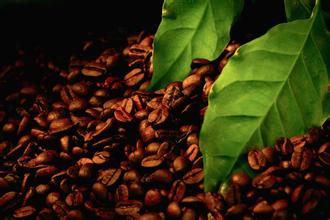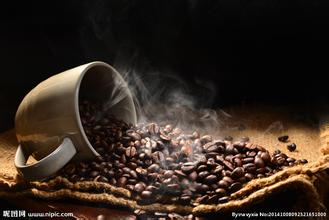How much coffee is processed by a coffee tree per season?-how to transplant a famine coffee tree
How much coffee is processed by a coffee tree per season?-how to transplant a famine coffee tree
According to authentic coffee experts, the dryness of coffee beans must be controlled when drying coffee beans, so as to ensure the strong aroma of coffee and the best moisture content of 11% to 12% of coffee beans. Too dry will make the coffee beans very fragile, leading to changes in quality, if not to the desired degree of dryness, then in the subsequent shelling process will be more likely to ferment, more vulnerable to fungi, bacteria, more likely to scratch. After the above work is completed, the coffee beans will be sent to a fermentation tank containing natural enzymes to soak for 36 hours. During these 36 hours, any remaining gel will be destroyed. In order to prevent the taste of the coffee beans from changing during fermentation, the fermentation process should be monitored and controlled. Finally, the coffee beans that have been removed from the gel are rinsed, and the coffee beans can be dried in the yard or on a wire mesh.
Although Arabica and Roberta are widely cultivated, there are significant differences between them. Beans are different and tree species are not the same. Therefore, their use is also different. The world's production of Arabica beans is about 70%, while Robosta and others account for 30%.
Arabica can produce rich oil, aroma overflowing, and there will be a very light layer of dark yellow oil floating on the surface. Roberta can produce more grease, but it has a lot of foam and disappears quickly. Roberta contains twice as much caffeine as Arabica. The caffeine content is 2.2-2.4% and 1.1-1.3% respectively. If too much robusta is added to the Italian concentrate, it will taste like a gelatinous drug.
After the fruit is harvested, the skin and flesh must be removed. The endocarp and silver peel are removed to form coffee beans. There are two kinds of methods: drying (natural drying, non-washing) and washing.
Dry type, the operation is relatively simple, the harvested fruit will be spread on the dry ground and basked in the sun for a week or two. The sound of rattling can be heard when it is turned, which means it is dry. Then use the sheller to remove the pulp, endocarp and silver skin of the dried fruit.
This method gives coffee beans a soft sour taste and a mild bitter taste. This method is used in Brazil, Ethiopia, Yemen and other places. Disadvantages: vulnerable to weather, defective beans and foreign bodies are more likely to mix. Therefore, it is necessary to select it carefully before delivery.
In the washing type, the harvested fruit is poured into the sink, the floating matter is removed, the fruit in the water is moved to the pulp removal machine, the skin and pulp are removed, and then put back into the tank to remove the floating matter, the "core" in the water is poured into the fermentation tank, soaked for half a day or one day, the colloid on the surface of the fermented bean is removed, washed, dried or mechanically dried, and the endocarp is removed on the peeling machine to become commercial raw coffee beans.

Important Notice :
前街咖啡 FrontStreet Coffee has moved to new addredd:
FrontStreet Coffee Address: 315,Donghua East Road,GuangZhou
Tel:020 38364473
- Prev

How often does coffee tree bear fruit Flavor Description Taste Manor Area Variety Features Introduction
How often does the coffee tree bear fruit Flavor Description Taste Manor Area Variety Features Introduction Borbon originated in Europe-a small island near Mozambique "La Reunion". It is adjacent to Madagascar Island, commonly known as Spice Island. Borbon trees are sensitive to insects and bacteria, and are vulnerable to threats, but they have high yields and require special care. the suitable
- Next

Description of characteristics and Flavor of Candle Coffee A brief introduction to the producing areas of Candle Coffee varieties
A brief introduction to the flavor of candle candle coffee in the first order of spelling and baking, for the flexibility of matching and the control of flavor, as well as the load limitation of my current bean dryer, I choose the method of baking first and then spelling; brewing and Italian, one of the same. Cooking and blending requires sour, sweet and sweet fragrance without losing elegance, as beautiful as my lover's whisper.
Related
- What brand of black coffee is the most authentic and delicious? what are the characteristics of the flavor of the authentic Rose Summer Black Coffee?
- Introduction to the principle and characteristics of the correct use of mocha pot A detailed course of mocha pot brewing coffee is described in five steps.
- Which is better, decaf or regular coffee? how is decaf made?
- How much is a bag of four cat coffee?
- How about four Cat Coffee or Nestle Coffee? why is it a cheap scam?
- Which is better, Yunnan four Cats Coffee or Nestle Coffee? How about cat coffee? is it a fake scam? why is it so cheap?
- How about Cat Coffee? what grade is a hoax? which instant coffee tastes better, four Cat Coffee, Nestle Coffee or G7 coffee?
- Process flow chart of coffee making-Starbucks coffee making process what coffee tastes good at Starbucks
- The top ten best coffee beans in the world Rose summer coffee or Tanzanian coffee tastes good
- Yunnan four cat coffee is good to drink?_four cat coffee is a big brand? four cat blue mountain coffee is fake?

